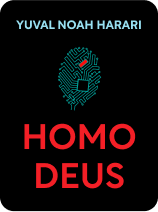

This article is an excerpt from the Shortform book guide to "Homo Deus" by Yuval Noah Harari. Shortform has the world's best summaries and analyses of books you should be reading.
Like this article? Sign up for a free trial here .
What is the difference between the remembering self and the experiencing self? How do the two selves interact?
The distinction between the remembering and the experiencing self was first made by Israeli psychologist and behavioral economics Daniel Kahneman to describe the two modes of self. The experiencing self exists only in the present moment, while the remembering self exists only in retrospect. Both selves interact to create perspective and inform decision-making.
Keep reading to learn about the dichotomy between the remembering self and the experiencing self.
The Self Dichotomy: Remembering vs Experiencing
The hemispheres of the brain create two versions of the human experience—the remembering self and the experiencing self:
- The experiencing self: Usually controlled by the right hemisphere, the experiencing self processes moment-to-moment information. Most people associate this “self” with instinct. For example, if you hit your head on a door frame, the experiencing self would cause you to grab your head, check for blood, and feel the pain of the impact.
- The narrating self: Usually controlled by the left hemisphere, the narrating self tries to rationalize past behaviors and justify future decisions. Most people associate this “self” with identity. For example, if you hit your head on a door frame, your narrating self may rationalize your clumsiness by attributing it to exhaustion while making you more conscious of the door frame for the next few days.
While the experiencing self produces a more immediate feeling in response to an experience, it can’t remember feelings, leaving the remembering self to create memories. These memories usually consist of highlights and end results, cutting out much of the detail felt by the experiencing self. The memory created by the remembering self evaluates the memory based on the “average” of the experience as a whole.
Both “selves” interact to create perspective and inform decision-making. The experiencing self can support or derail plans made by the remembering self. For example, if you decide to go on a diet, your experiencing self may not feel like cooking one night, leading you to order a pizza instead.
The remembering self, on the other hand, can frame in-the-moment experiences. For example, someone fasting before surgery is going to feel differently than someone fasting for religious reasons. While both parties are experiencing hunger, their narrating selves create perspectives that shape the way they respond to their hunger.
(Shortform note: For another perspective on the “experiencing self” and the “narrating self,” check out Shortform’s summary of Thinking Fast and Slow by Daniel Kahneman.)
The Cold Water Experiment
In one study, researchers conducted a two-part experiment. In the “short” test, participants were asked to submerge their hand into a tub of cold water for 60 seconds. In the “long” test, participants were asked to submerge their hand into a tub of cold water for 90 seconds. Unbeknownst to the participants, the researchers added a little warm water to the tub during the “long” experiment after the subject had their hand in the tub for 60 seconds.
The parts of the experiment were administered in random order, with some participants performing the “short” part first, while others started with the “long” part. Even though both parts of the experiment required subjects to leave their hand in the cold water for 60 seconds, 80% of participants found the “long” test more bearable than the “short” test. By adding the warmer water for the last 30 seconds, researchers lowered the “average” level of discomfort, leading the narrative self to remember the “long” test as less painful.
Reproduction and Childbirth
Childbirth isn’t a pleasant experience, with women often experiencing excruciating pain. However, in the days following labor, women experience higher levels of cortisol and endorphins, creating a brief positive experience. The narrating self clings to this positive experience to frame childbirth in a positive light. If humans hadn’t evolved to remember reproduction positively, few would want to go through the pain associated with labor, and the survival of humanity would be put at risk.
Hardship and the Remebering Self
The remembering self tries to attach meaning to hardship, making it more endurable. It creates purpose within chaos and allows people to move forward after a difficult or traumatic time. However, when humans rely solely on this perspective, they run the risk of disconnecting from logical reasoning and often make choices that exacerbate an issue even further.
For example, the Scottish government once decided to construct a new parliament building with a budget of £40 million and a one-year timeline. However, the construction process was tumultuous, with unexpected issues arising every day. Afraid to abandon the project and lose the millions they’d already invested, the government continued to extend the timeline of the project and invest more money. When the building was finally completed, five years had passed and the government had spent £400 million, 10x the original budget.

———End of Preview———
Like what you just read? Read the rest of the world's best book summary and analysis of Yuval Noah Harari's "Homo Deus" at Shortform .
Here's what you'll find in our full Homo Deus summary :
- Why technology is replacing humanist ideals
- How previous generations relied on prayer to deal with serious problems
- How AI and algorithms are going to run the world






